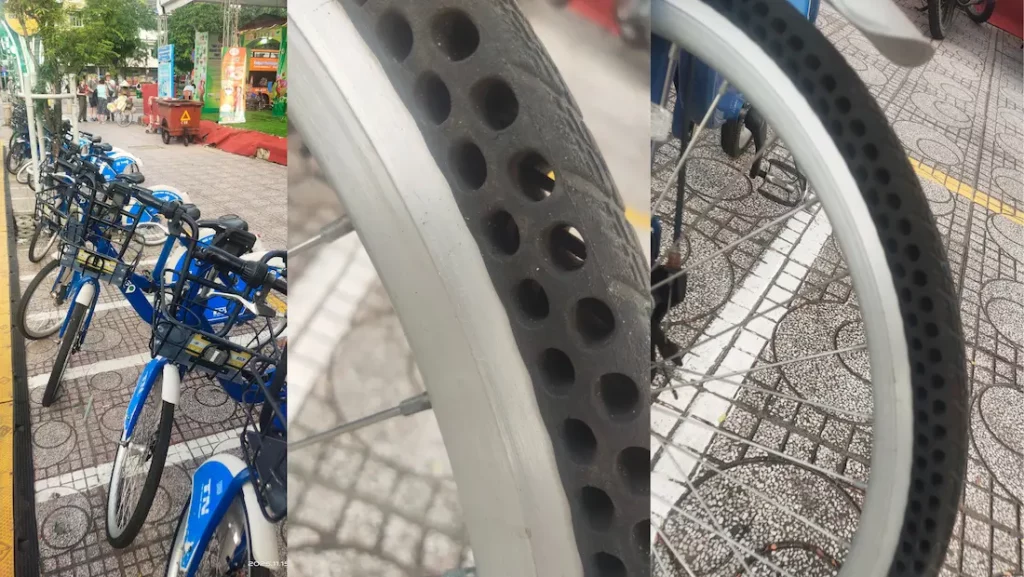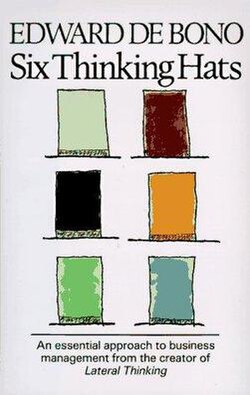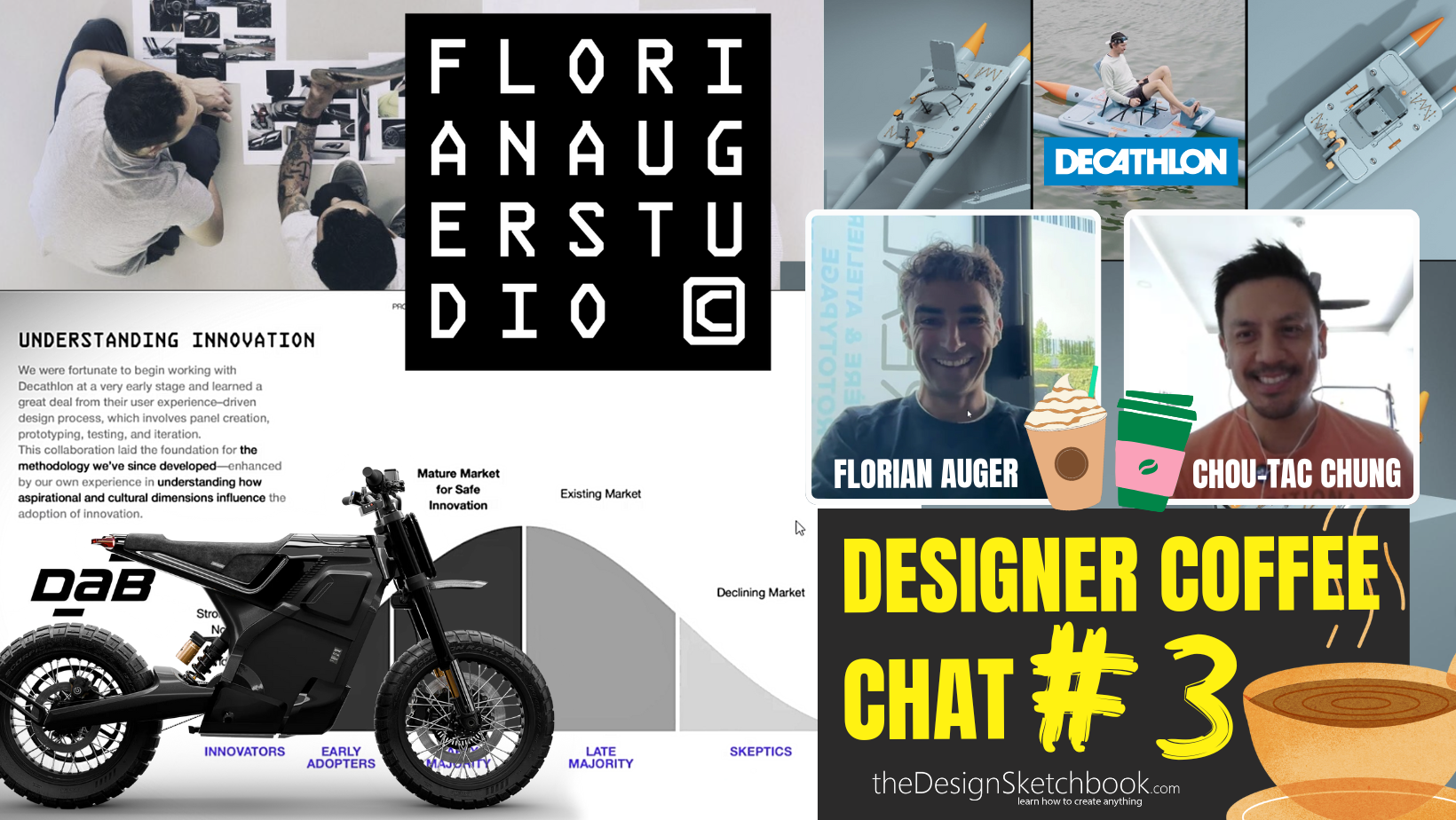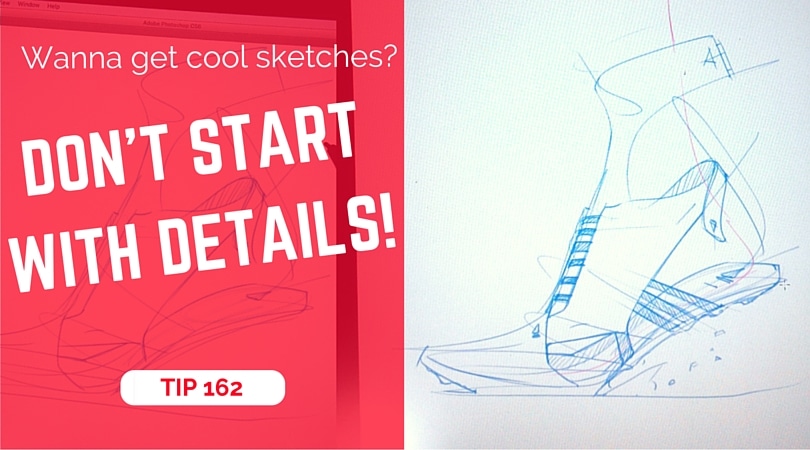- 1. Great Innovation Isn’t Always Revolutionary
- 2. How to make your innovation loved and valuable
- 3. Discover new niche of users!
- 4. Why Questioning the Status Quo Matters
- 5. Have you Heard about Disruptive Innovation?
- 6. How Design Leaders Embrace “Dumb Ideas”
- 7. Don’t fear looking silly!
- 8. Celebrate Small Innovations

Hello from Quynh Art Gallery in Saigon, Vietnam!
What if I told you that some of the best innovations come from what people initially thought were “Dumb ideas”?
Yesterday, I was walking through the city of Saigon and noticed a shared bike for rent with tires full of holes (See Photos).
No air, just thick rubber with perforations.
At first, I thought, “That’s kind of a dumb idea, right?” But it must have a logic reason. I realized it was exactly this simple concept that solved a big problem: no more flat tires to fix!

1. Great Innovation Isn’t Always Revolutionary
What I love about Industrial Design is:
Innovation isn’t always about high-tech or complicated inventions like a Space X Rocket.
It is also about “The simpler, the smarter. To me, I believe that Designers are now real-life hackers. : )
Often, it’s these “dumb” little ideas hiding in everyday life that make the biggest difference. And as sketchers and industrial designers, that’s the mindset we need: daring to question the status quo to give the simplest ideas a chance.

Many aspiring designers and sketchers feel like innovation means creating something entirely new or groundbreaking. The more extraordinary, the better.
But that’s not always true.
Innovation can be as simple as changing a tiny detail that makes life easier or more functional. The bike tires I saw are a perfect example: solid rubber with holes to prevent flats, which is brilliant for busy city bikes.

2. How to make your innovation loved and valuable
For an innovation to be valuable, mhhh… think of giving a present to your loved one.
I mean, no matter how expensive or cool a present is, if your lover doesn’t like playing Playstation 5, I am no sure she will feel excited about discovering one opening her present.
It’s obvious you may say!
But creators tend to create and offer to the world what they love, instead of creating what people want. Sometimes, you may pause and reflect yourself if you fell in that trap. Ok?

You may meet inventors who do that mistake at invention fairs; they fall in love with their invention and invest their whole life savings in it but find no one buy it there neither at Shark Tank.
As a designer, thinking product is essential yes, but thinking of your user’s needs is your job number one!
3. Discover new niche of users!
Remember, always offer an innovation to the right people is key to success and user’s happiness.
Example of why context and user’s needs matters:
- Perforated tires + Mountain Biking = Terrible Choice
Perforated tires = Non natural shock absorption, heavy, bad heat dissipation, risk of accidents) - Perforated tires + Casual City cycling = Awesome Choice!
Perforated Tires = Durable, low maintenance, no more puncture tires, choice of bicycle more reliable
A bike is not just a bike, by identifying various usage of a bike, you find plenty of opportunities to create new types of bikes for specific niche and users. “An innovation becomes SMART only when you link it to the right users.”
4. Why Questioning the Status Quo Matters
Daring innovators lead the way by challenging what’s normal. Think about car lamps from the FORD T that no longer sticking out because someone asked, “Why not put them inside the car body?”
Today, it feels obvious, but someone had to be bold to change that.
Is there anything you saw you think could be improved? If yes, maybe you hold an opportunity to create a “New Normal” (The next standard).


When you question the status quo, you may find new usage and create an iconic product loved by everyone.
Here are two examples where ideas initially labeled as “dumb” led to huge success:
Post-it Notes:

What started as a “weak” adhesive failure ended up becoming an essential office classic worldwide.
The Post-it was actually born from a happy accident, a failed batch of glue that didn’t stick well.
Usually, glue is made to be super strong and permanent, right? But what if that “weak” glue could let us stick notes temporarily and peel them off without leaving any mess?
That’s when the idea clicked!
Dyson Vacuum Cleaners:
At first, people just couldn’t believe James Dyson’s vacuum could work without a bag. I mean, vacuum bags were the norm, everyone thought that was just how it had to be.
But Dyson noticed something, when the vacuum bag got full, the suction lost its power.
So, he came up with this tornado-style vacuum system and worked on thousands of prototypes. Still, no one wanted to change what “already worked.”
Can you imagine how frustrating that must have been?
He knew he had something great, but no one was ready to try it. So, guess what?
Dyson just said, “Fine, I’ll do it myself!” and launched the brand we all know today.

Nowadays Dyson is a company icon of Design and even organise International Design Competition to promote disruptive innovation: The James Dyson Awards.
What seems to be obvious today, there was actual designers who used to fight for it to make it happened.
Like what Michael DiTullo said: “Anyone can have ideas. The difficult part is to protect it.”
5. Have you Heard about Disruptive Innovation?

Disruptive innovations don’t aim to outdo existing products on traditional terms.
What we often call “dumb ideas” can actually be a form of disruptive innovation. This term, popularized by Clayton Christensen, describes innovations that start simple and overlooked but eventually change entire industries by offering new, more accessible, or more affordable solutions.
Instead, they create new markets or value networks by solving problems in novel ways. Take the shared bike with perforated, no-flat tires in Saigon. At first glance, it’s not a fancy high-tech upgrade. It’s just a simple tweak. But it disrupts the typical bike experience by drastically reducing maintenance hassles, making the bike more reliable and accessible for everyday city use in the world from Vietnam to eventually Los Angeles!
The genius of disruptive innovation lies in embracing those “dumb ideas” that challenge assumptions, often facing skepticism or ridicule early on. These ideas start small but build momentum by focusing on untapped user needs or overlooked problems.
Remember this:
- Industrial Designers understand that innovation isn’t only about inventing the next high-tech gadget. Sometimes, it’s about daring to redefine expectations, solving real problems with simple, clever solutions that others might initially dismiss.
- Don’t let yourself trap by: “If it were so simple somebody else would have done it already!”
6. How Design Leaders Embrace “Dumb Ideas”

Product Design leaders often question so-called “dumb ideas” differently because they know innovation often starts there. Instead of dismissing them, they:
- Approach these ideas with curiosity and an open mind, knowing breakthroughs often come from the unexpected
- Ask “What if?” and “Why not?” to explore hidden potential
- Prototype and test quickly, seeing sketches and rough concepts as valuable experiments
- Create environments where failure or looking silly is okay, because that’s how innovation thrives
This mindset helps leaders spot hidden gems in ideas that might seem odd at first and push creative boundaries beyond what everyone expects.
7. Don’t fear looking silly!
If you are designer, but fear people mock you, you are preventing yourself from success. The fear of looking silly stops many creative ideas before they start. But innovators know that those “dumb” ideas could be hidden treasures.
When sketching:
- Fill your sketchbook of all your “dumb Ideas” you have in mind.
- Keep your lines loose and add some notes
- Don’t worry about perfection, it’s about exploring ideas, draw with “Ugly Doodles”
8. Celebrate Small Innovations

To truly appreciate design innovation that changes the world, we first need to stop looking down on small or simple ideas. Finding beauty and potential in the little things trains us to stay curious and open.
Embrace all ideas, dare to sketch and explore them, because innovation lives not just in grand gestures but also in the subtle shifts that shape our everyday lives.
Cheers,
Chou-Tac
BOOK Recommendation: When I was a design student, my friend Jerome Ramani introduced this book to me: “Six Thinking Hats” from Edward Debono. I invite you to read it to discover more how to become more creative adopting different point of views. I loved it. Hope you too!

- First picture: Painting from Tran Van Thao at Gallery Quynh, Ho Chi Minh City
















Add comment